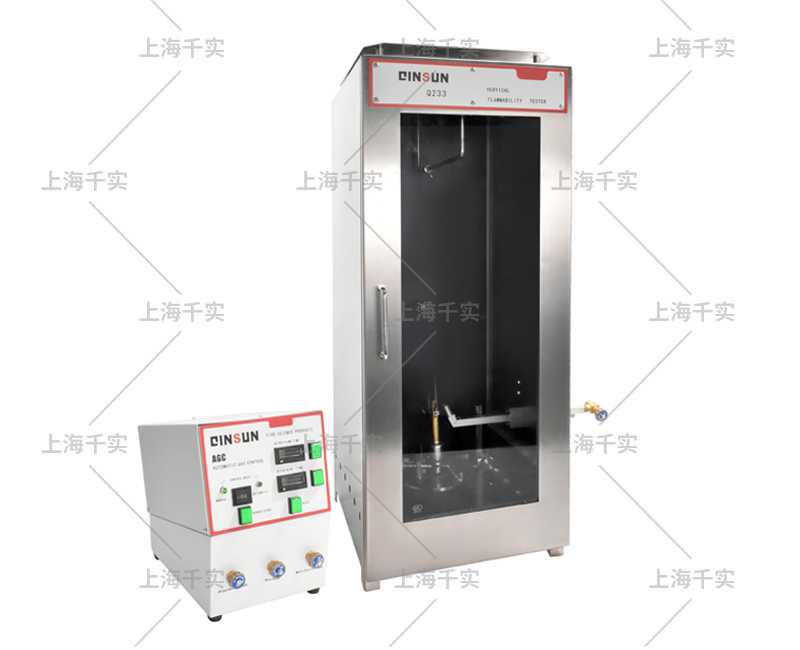What materials can be tested in the Vertical Flammability Test Chamber

The vertical flammability test chamber is a specialized testing equipment designed to evaluate the burning performance of materials in the vertical direction. By simulating flame combustion conditions, it measures parameters such as burning time and rate to determine whether the flame retardancy of materials meets relevant standards, serving as an important tool for flame retardancy performance testing of materials.
Applicable Standards:
ASTM D6413, CALIF TB117, DOC-FF 3/71, 16CFR Parts1615/1616, FTMS 191-5903, CPAI 84

Vertical flammability test chambers, such as the UL94 vertical burning test chamber, are primarily used to detect and assess the burning characteristics of various materials in the vertical direction. Some of the main material categories that can be tested include:
- Building materials: including wall materials, roofing materials, insulation materials, and decorative materials. These materials play a crucial role in structural support and aesthetic decoration within buildings, and their flame retardancy directly affects the fire safety of buildings.
- Transport vehicle materials: such as automotive interior materials, aircraft seat materials, and ship cabin materials. These materials occupy a large area inside transport vehicles, and their burning performance directly impacts passenger safety.
- Electrical wires and cables: including power cables, communication cables, and control cables. Electrical wires and cables play an important role in transmitting electrical energy and signals in circuits, and their flame retardancy is crucial for preventing fire spread and ensuring circuit safety.
- Textiles: including clothing fabrics, curtain fabrics, and carpets. These materials are widely used in daily life, and their burning performance directly affects people's lives and property safety.
- Plastic products: including household appliance casings, electronic product casings, toys, etc. Plastic products are widely used due to their lightness and durability, but their burning performance is also a safety factor that cannot be ignored.
During the testing process, the vertical flammability test chamber simulates the conditions of materials being exposed to flame in the vertical direction and records key parameters such as burning time and rate. Based on these parameters, the flame retardancy of materials can be assessed to determine whether they meet relevant standards and requirements.
It is important to note that different materials may require the adoption of different testing standards and methods. For example, the UL94 standard is primarily used to evaluate the flammability of plastic materials, while the GB/T 2408-2008 standard applies to the assessment of the burning performance of plastic materials (including both horizontal and vertical methods). Therefore, when selecting a vertical flammability test chamber and formulating a testing scheme, it is necessary to determine appropriate standards and testing methods based on the specific characteristics and requirements of the materials.
In addition, the design and operation of the vertical flammability test chamber have fully considered ergonomics and convenience to ensure the accuracy and reliability of test results. At the same time, the test chamber is equipped with various safety protection measures, such as gas pressure relief devices, explosion-proof glass observation windows, and gas leak detection devices, to ensure the safe conduct of the testing process.
Qinsun Instruments Co., LTD, established in 2012, focuses on the research and development, design, and production of textile testing instruments. It provides textile testing instruments and services to academic research units and testing institutions. Qinsun is currently one of the most competitive and R&D-capable manufacturers of textile testing instruments in China, with an R&D team composed of experienced engineers. We are dedicated to serving our customers with all our hearts and striving to promote technological innovation in textile testing instruments.
2025-01-08 11:29

